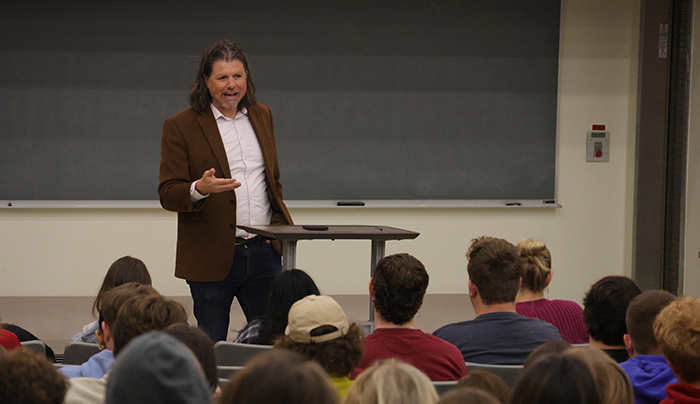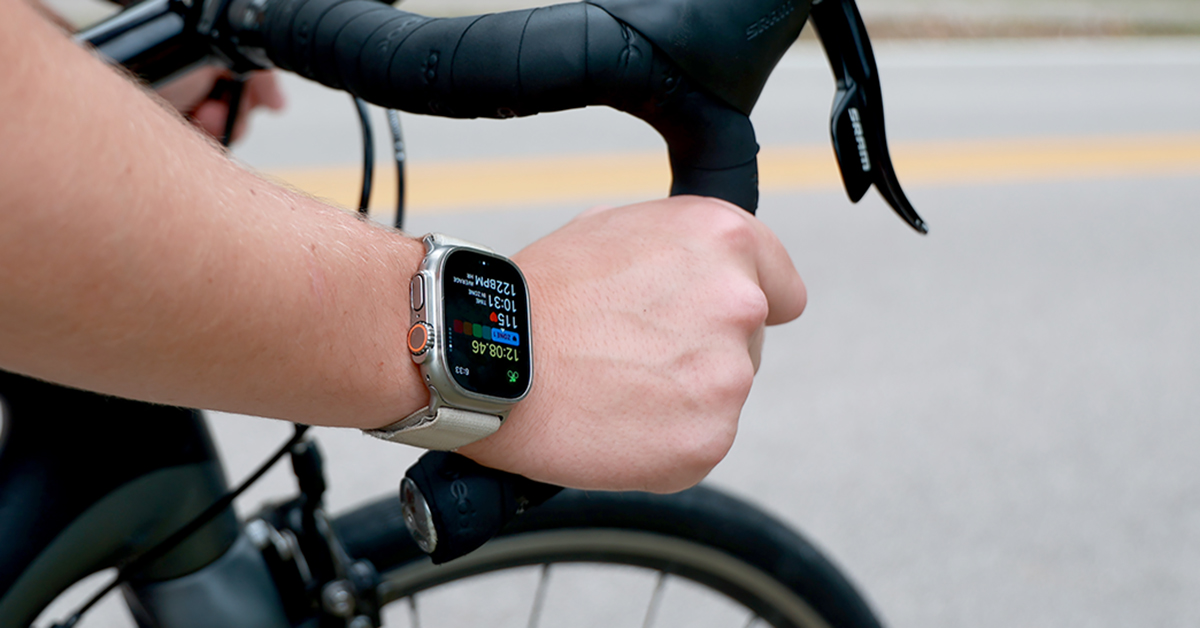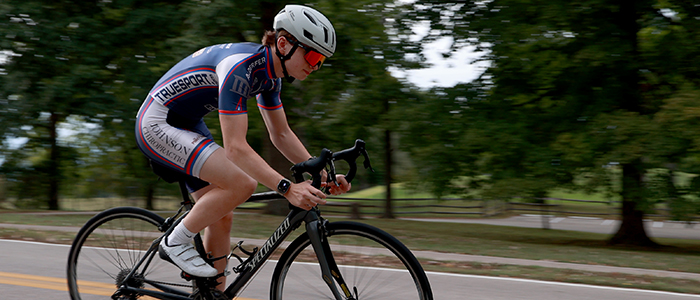Mau Brito

A senior from San Luis Potosi, Mexico studying Media Advertising at IU. I enjoy cycling and photography. I aspire to work at an advertising agency as an art director.
By Mau Brito, Charlie Collier and Harley Haisley
BLOOMINGTON, IN (Nov. 5, 2024)
Penn State Tennis player Nolan Ranger knows from experience that Name, Image, and Likeness opportunities are often only available to football and basketball players. A new lawsuit now threatens to shift the balance even further towards athletes in the main profit-generating sports.
“Obviously, football and basketball are the bankroll of the athletic department. There’s no way to say it’s unfair, because it’s not. But is it frustrating at times? Sure,” he said.

House v. NCAA is set to go into effect as early as next April, and has the potential to shake up the athlete experience in collegiate sports. Among other things, it allows athletes to be paid just for playing, and provides billions in back pay to former college athletes.
Galen Clavio, head of the Sports Media program at Indiana University, says that the settlement would fundamentally change how athletes get paid.
“It would allow college athletic departments to opt into revenue sharing directly with current and future college athletes, starting at about $22 million per year. Just to be clear, that’s $22 million a year that athletic departments would have the ability to pay directly to athletes,” he said.

While this is exciting news for many college athletes, not everyone will benefit equally. Athletes from different sports bring more or less profit to their school and Clavio says that this could affect the money that they make.
“Whether we want to acknowledge it or not the market value of a men’s golf team member is generally going to be significantly less at the college level than it would be for a comparable basketball player or football player, simply because of the sheer amount of money through television contracts, ticket sales, and other items that come through basketball and football that don’t come through golf,” he said.
95% of the back pay from House v. NCAA will go to former athletes from the 3 biggest revenue generating sports: 75% to men’s football, 15% to men’s basketball and 5% to women’s basketball. That leaves just 5% of the fund to every other college sport combined. This back pay reflects what it will probably look like for current athletes when they start getting paid directly.
So how can athletes outside of football and basketball capitalize on their name, image and likeness? Ranger emphasized the importance of building personal, local connections. For athletes in smaller sports like tennis, success often comes from their community.
“The owner of a local tennis shop reached out to me through a tournament he was hosting this past summer. When I’m in town, I make appearances, do signings, or give a lesson to a customer of his choice,” he said.
Another strategy athletes can use is to tap into sport-specific brands, where they may stand out as one of the best in their field. Jeremy Gray, Communications Director of The Cuban Center, says that oftentimes, athletes in small sports don’t even realize that opportunities are waiting for them.
“Especially in what we call the non-revenue sports, it’s important to let athletes know that they’re really the top of the heap in that sport and there are ways for them to maximize that,” he said.

One more key strategy is using social media to attract potential sponsorships. Ranger, for example, uses his platform to promote brands as an ambassador. The direct connection with followers that social media provides can be a major asset for athletes in smaller sports. As Clavio points out, the value lies in the audience an athlete can bring.
“For a lot of businesses who would want to contract with an athlete from an NIL perspective, a lot of it is about what market the athlete is bringing to the table, and in most cases if you bring 25,000 people on your Instagram feed and a lot of them are the age of the people in this room, that’s value being added and you can get paid for that,” he said.
Gray added, “Teaching athletes social media best practices and how to accentuate their own brand is really, really important.”
While you may not be getting paid directly by your school, you don’t need to be a football or basketball player to become a sponsored college athlete. Benefiting from NIL outside of a revenue generating sport is hard, but you can succeed by being creative in how you market yourself and focusing on making personal connections.
“I’ve reached out to a lot of brands without a response. In the end, the ones that truly matter are the ones that you connect with on a personal level as an athlete,“ Ranger said.
We asked Bloomington locals for their opinion on House v. NCAA, as well as what they think about how athlete pay should be split between sports. They had an overwhelmingly positive reaction to the lawsuit, but were unsure how the split was going to work.
###
Media Contacts
Natalie Jordan
Charlotte Young
Mauricio Brito

CUPERTINO, California (Sept. 9, 2014) – Apple CEO Tim Cook took to the stage on Tuesday, September 9th, in Cupertino, California in front of an audience to unveil the newest product, Apple Watch. This represents a significant leap in wearable technology, designed to complement the lifestyle of today’s user.
In crafting the much-anticipated Apple Watch, Apple focused on honoring the expression of users. They dedicated themselves to a focus on design, functionality, and seamless integration within its system of other devices, including the iPhone and iPad. This new customizable timepiece is not just a watch; it’s a powerful extension of the user’s digital life, in more ways than one.

The Apple Watch features a stunning revolutionary touchscreen that offers a rich, interactive experience, just as its other products have as well. Its comprehensive fitness system is designed to help users track their health and wellness goals, as the Apple Watch integrates with the Health app, allowing users to gather health data and share it with healthcare providers if they choose. From monitoring heart rates to tracking workouts, ensuring they stay motivated and informed about their bodies.

The Apple Watch was crafted from premium materials, making it also visually similar to other Apple products with the metallic finishes. Understanding that personalization is key in today’s tech landscape, Apple has ensured the Apple Watch offers a variety of customizable colors and designs. Users can choose bands that reflect their individuality, making the device not only functional but also a true expression of personal style. “Apple Watch is the most personal device we have ever created. It’s not just with you, it’s on you. It’s a revolutionary way to connect.” said Tim Cook, while addressing the crowd.
An innovative feature of the Apple Watch is its unique “Crown” dial. This design element allows users to navigate the extensive software without obstructing the small touchscreen. With a simple twist or press, users can effortlessly scroll through notifications, access apps, and control music, enhancing the overall user experience.
When compared to Apple’s other products, the size difference and overall usability of the Apple Watch is very different in terms of the system. Photos of previous Apple products and different innovations played on the screen as the crowd roared with excitement for what was to come. “Apple introduced the world to several category-defining products: the Mac, iPod, iPhone, and iPad. Once again, Apple is poised to captivate the world with a revolutionary product that can enrich people’s lives. It’s the most personal product we’ve ever made.” said Cook. The crowd erupted in excitement, a testament to the enthusiasm surrounding this innovative release.
The Apple Watch will be available for pre-order starting October 1st, with the official launch set for October 15th. Apple enthusiasts and tech lovers alike can expect a game-changing device that not only keeps them connected but also inspires a healthier lifestyle while being customizable.
Tim Cook, CEO, displays a picture of the first ‘Apple Watch’ and discusses the critical thinking needed to develop the product. Cook talks about how the watch is Apple’s most personal product.
Cook presents the complexity of the design of the Apple Watch and how its style and taste optimizes user experience. The watch features a sleek, lightweight design suitable for a customer’s personalization.
###